Traces of golden fortifications and dragon tiles
Accordingly, many "pieces" of dragon head, body, and tail tiles found at this world heritage site have been joined together to finally reveal the shape of a dragon. At the Imperial Citadel of Thang Long (Hanoi), archaeologists have found both yellow and green glazed dragon tiles.
According to Associate Professor, Dr. Bui Minh Tri, it was this yellow dragon tile that made up the roof of Kinh Thien Palace - the most important palace in the Imperial Citadel with the role of the royal court. "These pieces of head, body, and tail formed a complete dragon shape. We compared the architectural materials at Thang Long Imperial Citadel with palaces in East Asia, especially China, and found that this is a type of tile that only exists in Vietnam. It brings the unique features of the architecture of the early Le Dynasty," said Mr. Tri.
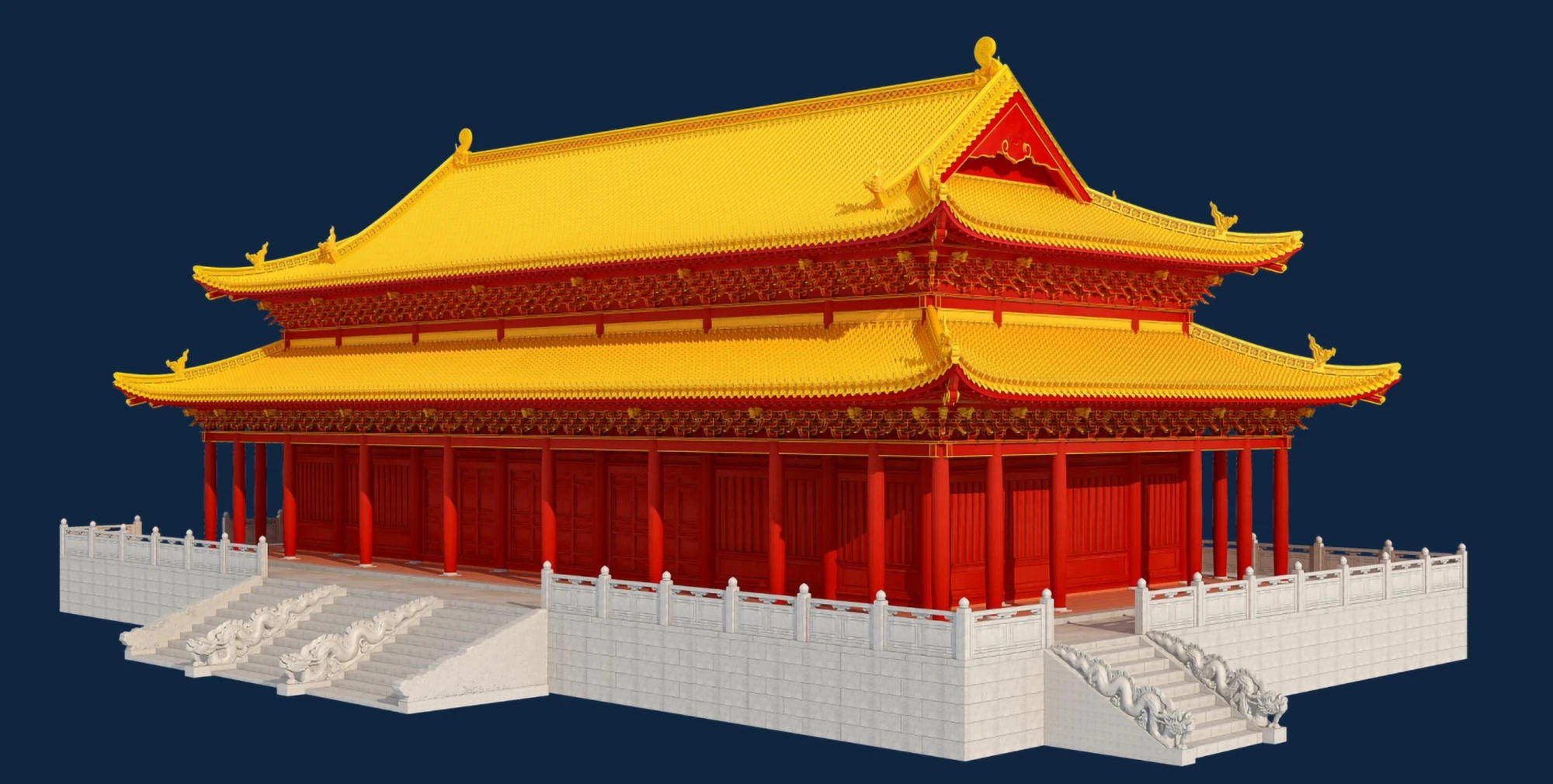
Form of Kinh Thien Palace in the early Le Dynasty
INSTITUTE OF IMPERIAL CITY RESEARCH
More specifically, Dr. Tri said that in ancient palaces in East Asia, the roofs of Japanese and Korean architecture often favored dark gray terracotta tiles. Palaces in China during the Ming Dynasty commonly used glazed tiles (yellow, green and blue glazes), of which yellow glazed tiles were the highest quality, used on the roofs of the king's and royal palaces.
"In Thang Long Imperial Citadel, the highest quality yellow-glazed dragon tiles were used to cover the roof of the most important palace in Thang Long Forbidden City, which is Kinh Thien Palace," said Dr. Tri.
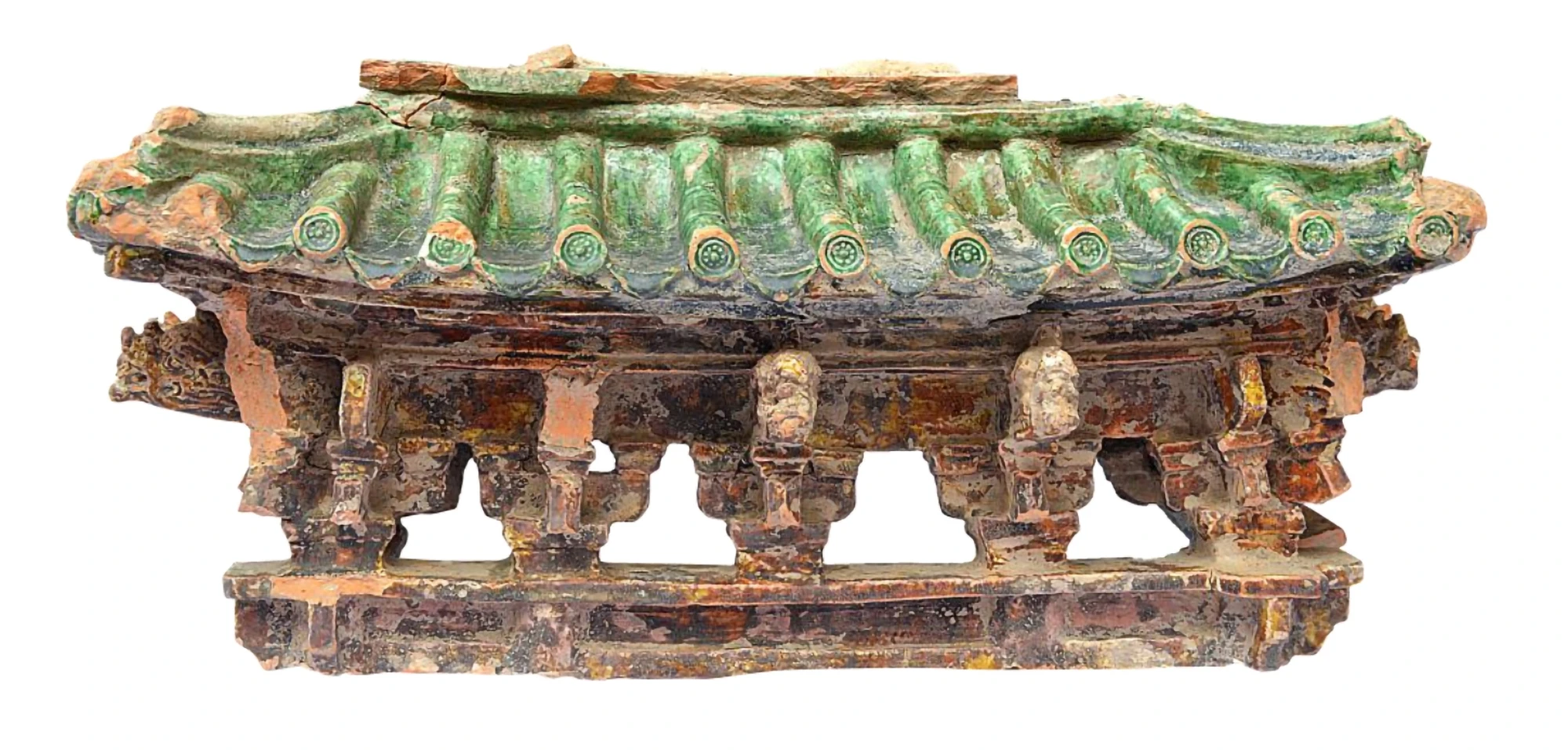
Model of Le Dynasty palace found at Thang Long Imperial Citadel
Another important research result also announced by Dr. Tri is the early Le dynasty's dou cong with many gilded wooden structures. Based on about 70 wooden structures found in excavations around Kinh Thien Palace in 2017 - 2018, Dr. Tri and his colleagues "assembled" them into "dou cong" (a type of roof support structure using the technique of overlapping beams). Accordingly, the Thang Long dou cong in the early Le dynasty was simple, the size of the dou cong clusters was similar to or slightly smaller than the Chinese dou cong clusters in the early Ming dynasty. "Dou cong originated in China, influencing countries with similar cultures such as Vietnam, Korea, and Japan," he said.
The Imperial Citadel Research Institute has also assembled a complete cluster of fortifications. The green glazed architectural model found during the excavation east of Kinh Thien Palace in 2021 further helped Mr. Tri confirm the fortification architecture of the Early Le Dynasty.
From the assembly of the crossbeams, Mr. Tri and his colleagues also deciphered the related architectural structures. Mr. Tri also said that many components to be assembled into the frame system, as well as the crossbeams, were painted with gold. "The components were gilded, even with gold in the number 4. This shows that the Le So dynasty was very rich," said Mr. Tri.
Models evoke emotion, not to be reconstructed.
The Imperial Citadel Research Institute also conducted a comparative study of the remaining traces of the Kinh Thien Palace with the most important palace architecture system in the Forbidden City of Beijing (China) such as the Thai Hoa Palace and the Can Chinh Palace in Gyeongbokgung (Korea). Accordingly, scientists determined that the architecture of the Kinh Thien Palace could also be built according to the common standard rules of ancient palace architecture in East Asia. This important palace is speculated to have a rectangular architectural unit.
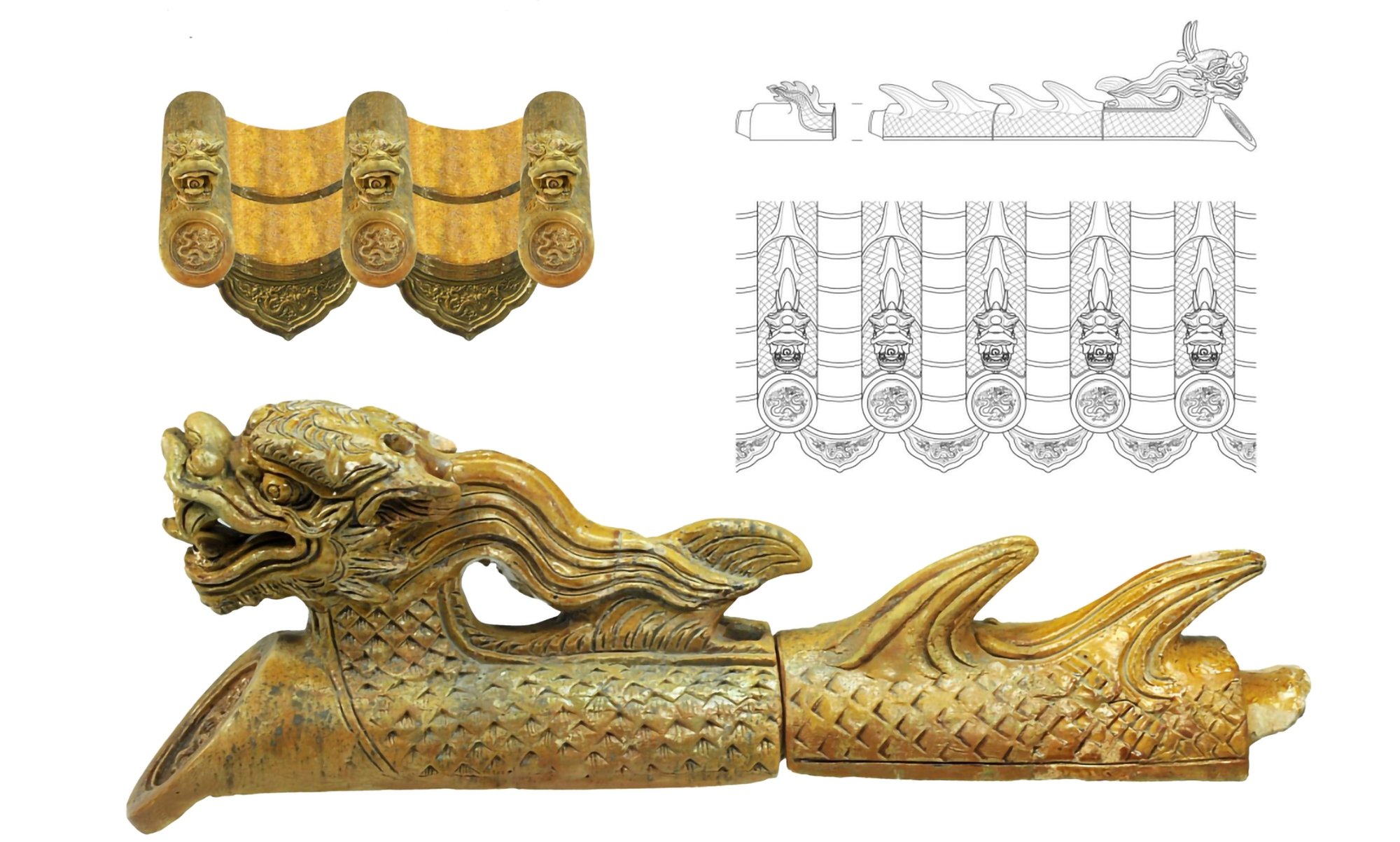
Dragon tiles of the early Le dynasty
Based on the width of the dragon-carved stone steps, it can be calculated that the main room of Kinh Thien Palace is 480 cm wide, and the two side rooms are 420 cm wide. From this data combined with comparative research with the main floor plan of Lam Kinh Palace, it can be determined that the number of horizontal rooms of Kinh Thien Palace is 9 (7 rooms and 2 wings), the depth of the palace is 6 rooms, with a large area of about 1,188 m2 (44 m long x 27 m wide), of which the horizontal has 10 columns, the vertical (or depth) has 6 columns, a total of 60 wooden columns.
Finally, scientists from the Imperial Citadel Research Institute have gradually decoded and successfully reconstructed the architectural form of Kinh Thien Palace. Accordingly, this is a palace built on a high foundation, in front of which there are 11 large stone steps carved with dragons, divided into 3 paths. The main path in the middle is for the king, the two sides are for the mandarins. In the middle, behind and on both sides of Kinh Thien Palace, there may be single stone steps also carved with dragons. On the palace steps, there are stone railings surrounding the wooden architecture painted with bright red lacquer. This architecture is large in scale, belongs to the type of architecture of the dou cong, trung diem, the roof is covered with special golden dragon tiles and is decorated with dragon head statues reaching high into the sky, creating the noble and powerful beauty of the dynasty.
In particular, Associate Professor, Dr. Bui Minh Tri and the staff of the Imperial Citadel Research Institute have built a model of Kinh Thien Palace in the early Le Dynasty. This model will be officially announced at the exhibition at the Hanoi Museum on November 29. This is also the way that the Dai Minh Cung Cultural and Historical Park (China) has done with ancient architecture, they have rebuilt display models, some outdoor fortifications so that people can feel the beauty of ancient royal life. This park later became a UNESCO world cultural heritage.
"We publish the research and model of Kinh Thien Palace during the early Le Dynasty so that viewers can visualize and reminisce about the past, but we do not intend to restore it," said Mr. Tri.
Source link


![[Photo] The Government Standing Committee works with ministries and branches on the real estate market situation.](https://vphoto.vietnam.vn/thumb/1200x675/vietnam/resource/IMAGE/2025/5/24/e9b5bc2313d14c9499b8c9b83226adba)



![[Photo] Ho Chi Minh City holds funeral for former President Tran Duc Luong](https://vphoto.vietnam.vn/thumb/1200x675/vietnam/resource/IMAGE/2025/5/24/9c1858ebd3d04170b6cef2e6bcb2019e)



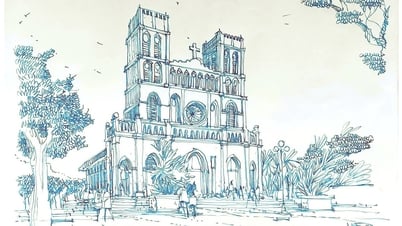
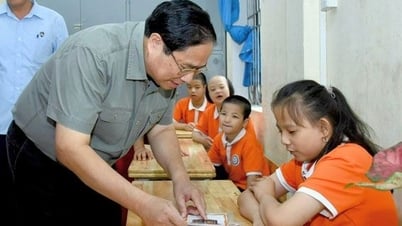

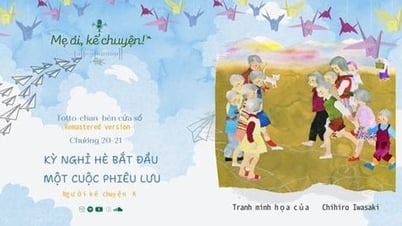





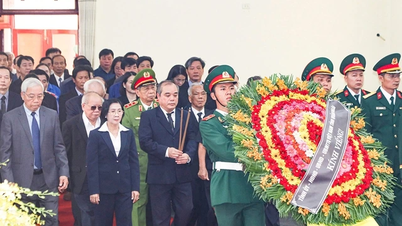
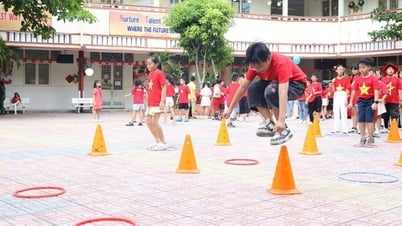





![[Photo] Party and State leaders visit former President Tran Duc Luong](https://vphoto.vietnam.vn/thumb/1200x675/vietnam/resource/IMAGE/2025/5/24/960db9b19102400e8df68d5a6caadcf6)
































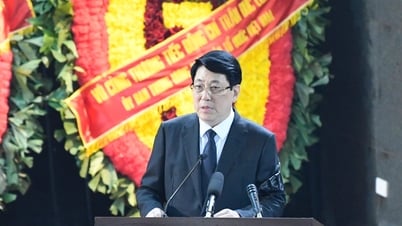

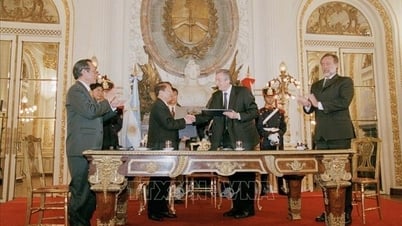












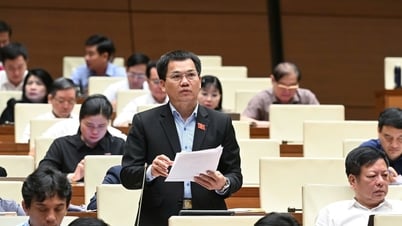

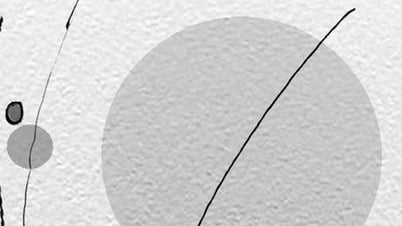



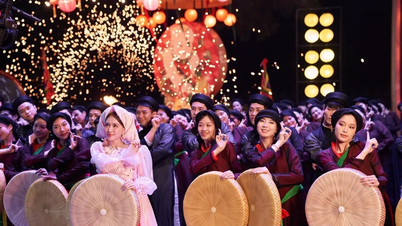















Comment (0)